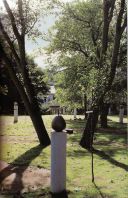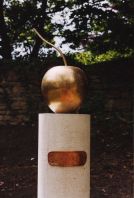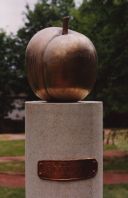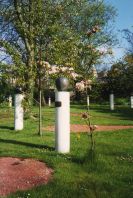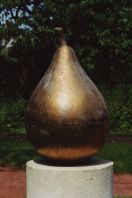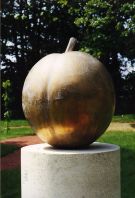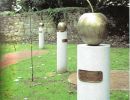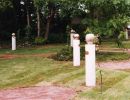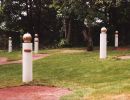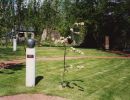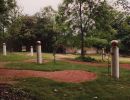by Mark Dion
An environmental art work
The Tasting Garden is an orchard. Its paths are laid out in the form of the branches of a tree. On each of the four main branches of this tree-pathwork are different fruit trees (apple, cherry, plum and pear), with each small branch-path ending at a particular variety of tree, together with a plinth bearing a bronze sculpture of its fruit.
In one corner is The Arboriculturist's Workshed, a small folly and monument to the achievements and skills, in both physical labour and intellect, of the dedicated men and women who slowly and carefully bred this diversity of fruit varieties over many generations.
Many of the trees chosen for The Tasting Garden are rare or endangered varieties which are threatened by the shift to monoculture agricultural production. Industrial farming grows only a handful of varieties which have commercially desirable traits such as long shelf-life, large yields, and pest resistance. A number of breeds which are now neglected, but which offer a wider range of tastes and textures, are included in The Tasting Garden. Extinct varieties are marked by memorial stones.
The branching pathwork which a visitor navigates through the garden is reminiscent of a family tree, or an evolutionary tree, and also evokes the tree-of-life, a literary and visual metaphor with a rich cultural history.
The Tasting Garden is a hybrid of orchard and artwork.
The garden is an artwork - the artwork is a garden.
CREATION OF THE TASTING GARDEN
Adjoining the Storey Institute is a large walled garden in two sections, the Storey Gardens. This garden was neglected and inaccessible to the public for many years, but in 1998 Storey Gallery succeeded in attracting ArtTranspennine98 (a collaboration between Tate Liverpool and the Henry Moore Trust) to fund the creation of a permanent environmental artwork, The Tasting Garden by Mark Dion, and so to make a public tranquil green space in the centre of the city.
 Storey Garden 1997
Storey Garden 1997
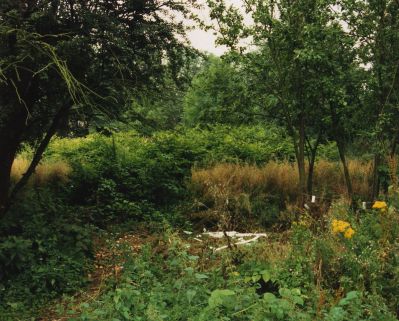 Storey Garden 1997
Storey Garden 1997
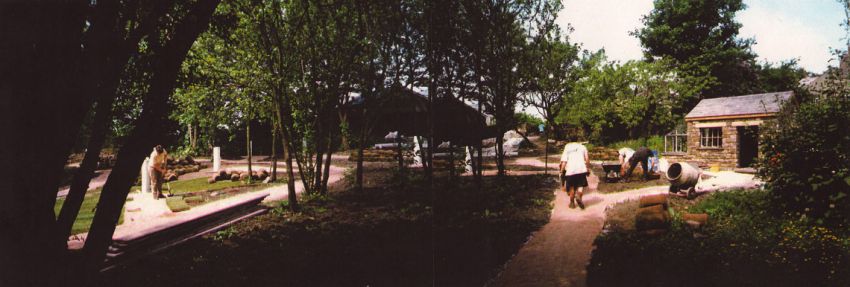 Creation of The Tasting Garden 1998
Creation of The Tasting Garden 1998
In the spring of 1998 a large and dedicated team of local people including gardeners, craftspeople, builders, artists, and Youth Training Volunteers, transformed this long-neglected garden into an artwork. The site was completely covered with Japanese knotweed, so preparation included several months work to remove this infestation by repeated digging. To provide public access, new steps were installed and a ramp constructed, so fully opening the gardens to the public for the first time.
Artranspennine98 was an exhibition of international contemporary visual art in which 50 international artists created 40 artworks for 30 sites from Liverpool to Hull. The Tasting Garden is one of the few permanent artworks. It attracted a lot of media attention, and large numbers of visitors. Many people visited Lancaster especially to see The Tasting Garden.
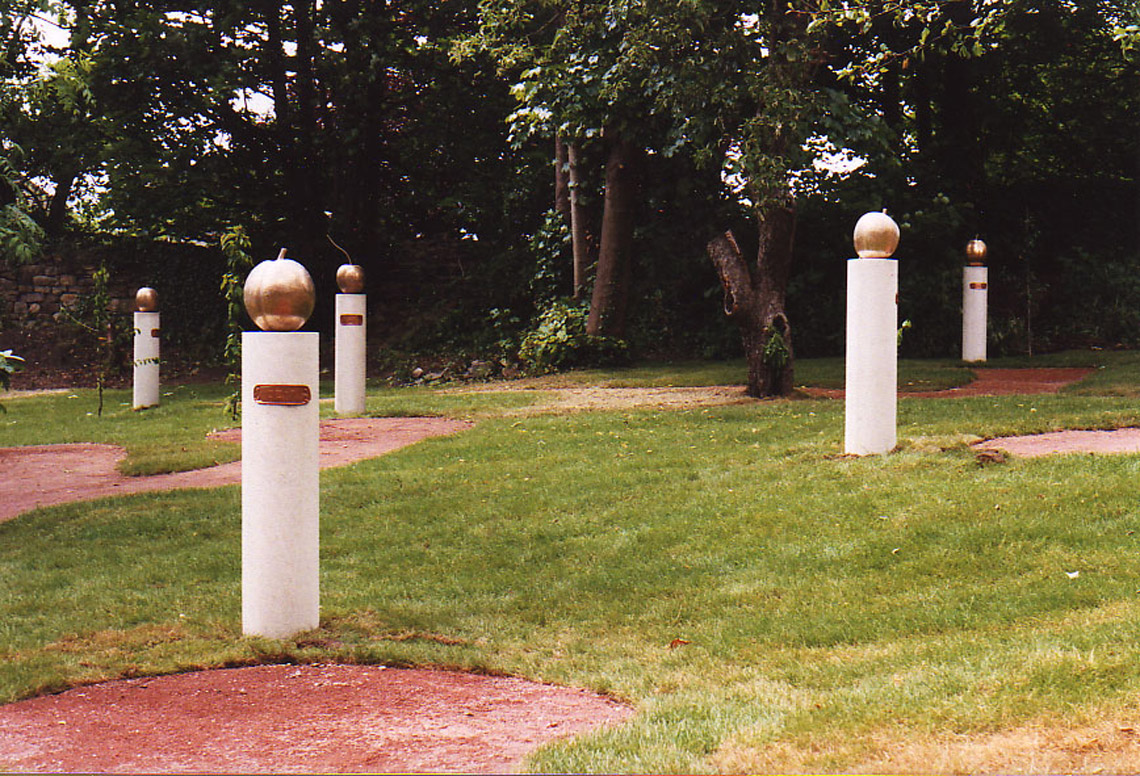
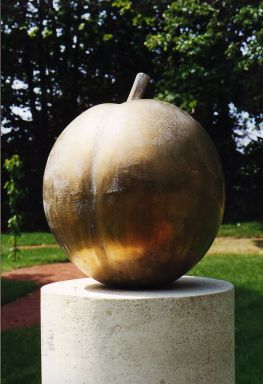
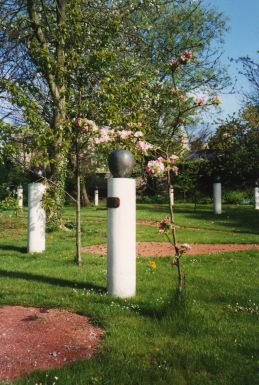
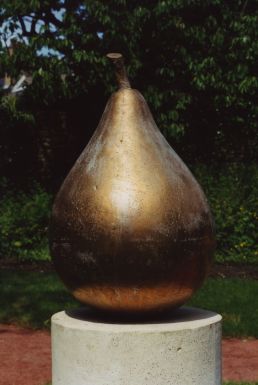
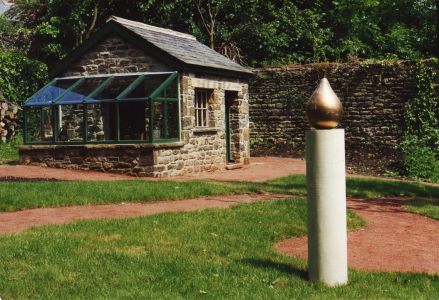
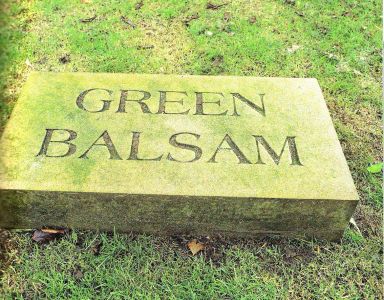
Mark Dion is an internationally renowned American artist whose work incorporates aspects of archaeology, ecology, and detection. His work explores the deeply conflicting ideas we have about nature, and is widely exhibited internationally including : Tate Gallery, London; Natural History Museum, London; Museum of Modern Art, New York; National Museum of Art, Osaka, Japan.
There are several links below to examples of his work. These include a piece in St Ives, Cornwall, UK - "The Maritime Artist". This link features an interview with the artist in which he explains some of his interests and methods of working which are relevant to The Tasting Garden, and particularly to the Arboriculturalist's Shed.
Tanya Bonakadar Gallery; Wikipedia
The Maritime Artist; Explorers' Club; Above/Below Ground; Neukom Vivarium; Tate Thames Dig;
The Tasting Garden was successfully open from 1998 until 2006. Although slightly hidden, this tranquil green space in the centre of the city was popular and well used.
The Storey Gardens were closed by the City Council in 2006, following a drug-use incident. This closure was extended due to the start of refurbishment work on the building when the whole site was closed until the Storey re-opened in 2009. The Council undertook to secure and maintain the gardens during this closure period, but unfortunately this agreement was not fulfilled.
In 2008, during this closure period, the bronze fruits were stolen from The Tasting Garden, presumably for their scrap metal value, and some plinths were damaged. Lancaster City Council’s insurance was apparently inappropriate to cover this loss, and the Council did not take any action for restoration.
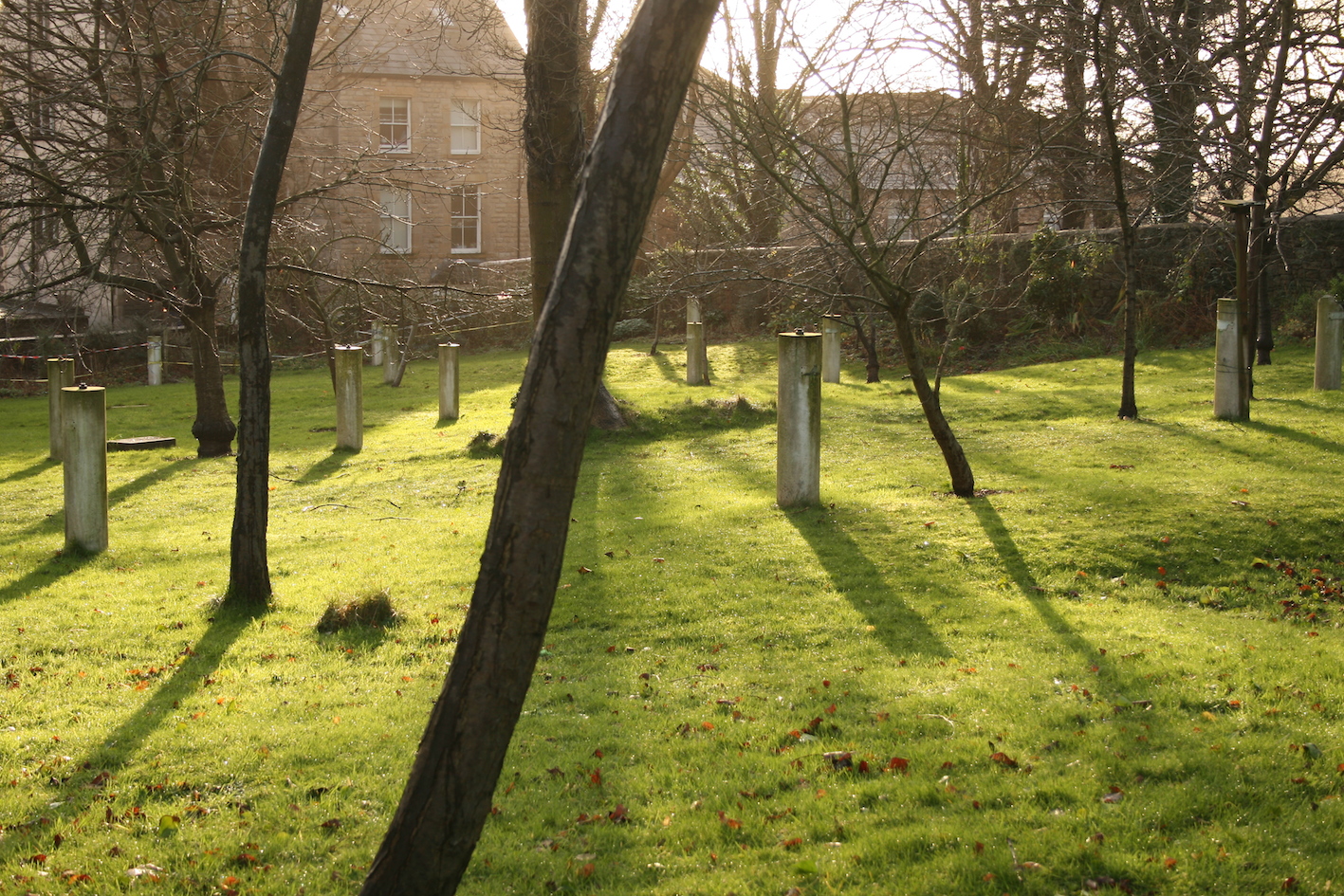
About 90% of the artwork remains. The trees, most of the plinths, the memorial stones, and the Aboriculturalist's Shed are still in place. Storey Gallery obtained agreement from the artist, Mark Dion, that the fruits could be replaced in resin. The Gallery obtained costings for production and installation of the fruits in this material, and replacement of the other damaged elements including some plinths and labels.
The Gallery pursued restoration of The Tasting Garden with City councillors, officers from both the City and County Councils, and with the managers of the Storey Creative Industries Centre. It was unable to make progress, and the City Council had no plan for maintenance and public access. The condition of the artwork, particularly the paths, continued to deteriorate.
A voluntary group, The Friends of Storey Gardens, was formed in 2013, with the support of Storey Gallery. The Friends have maintained the gardens ever since, now with support from Lancaster City Council, and have re-opened them to the public. The Friends are now (2022) working towards recreation of The Tasting Garden.
There is a set of recent photos of The Tasting Garden on the ArtUK website
.

